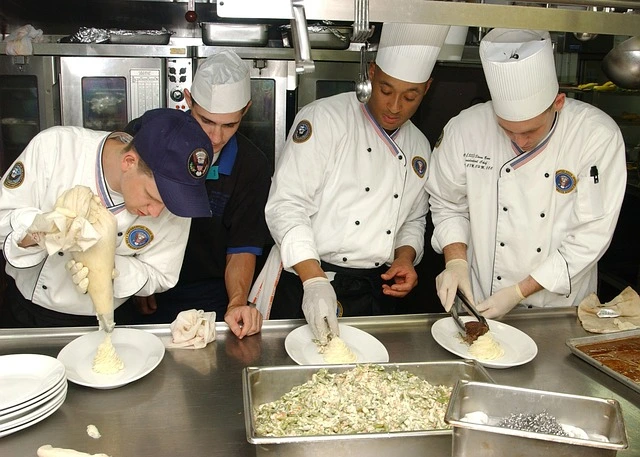Navigating Tax Obligations in Culinary Education: Tuition Revenue and Educational Material Costs
Culinary schools and culinary workshops provide vital instruction and skills to both aspiring chefs and home cooks. However, dealing with the tax ramifications of running these educational businesses can be complicated. This guide examines the primary tax implications for culinary schools and cooking lessons, with an emphasis on tuition revenue and educational material costs.
Understanding Tax Obligations for Culinary Education Providers.
1. Tuition Revenue:
Taxable Income: Tuition fees from students are taxable income. Culinary schools and culinary class providers must properly record this income on their tax filings.
Invoices and Receipts: Proper documentation of all tuition fees, including invoicing and receipts, is critical for correct reporting and tax compliance.
2. Educational Material Costs:
Deductible Costs: Educational materials, including textbooks, cooking ingredients, kitchen equipment, and class supplies, are often deductible business costs.
Inventory Tracking: Keeping precise records of inventory purchases and usage ensures correct expense deductions and inventory management.
Tax Strategies for Culinary School and Cooking Classes
1. Expense Tracking:
Detailed Records: Keep meticulous records of all expenses incurred while running the culinary school or cooking class, including receipts and invoices for educational materials, marketing, utilities, and other operational costs.
Categorization: Accurately categorize expenses to maximize deductions and simplify tax filing.
2. Depreciation of Equipment:
Capital Assets: Kitchen appliances such as ovens, stoves, and mixers are classified as capital assets and can be depreciated throughout their useful lives. Depreciation allows you to spread the cost of these assets over multiple years.
Section 179 Deduction: You may want to take advantage of the Section 179 deduction, which permits the immediate depreciation of qualified equipment purchases, subject to a cap.
3. Home Office Deduction:
Qualifying Criteria: If you operate cooking lessons from your home kitchen, you may be eligible for a home office deduction, as long as the room is utilized primarily and consistently for business activities.
Calculate the deduction: Calculate the deduction depending on the percentage of your home’s square footage dedicated to commercial activities.
Tax Compliance Tips for Culinary Education Providers.
1. Sales Tax Considerations:
Sales Tax on Classes: Depending on the jurisdiction, cooking classes may be subject to sales tax. Check local and state regulations to see if sales tax is applicable and verify compliance.
Material Sales: Educational materials sold separately, such as cookbooks or cookery kits, may be subject to sales tax. Properly collect and remit sales tax on these purchases.
2. Form 1099 Requirements.
Independent Contractors: If you hire guest chefs or instructors as independent contractors, issue Form 1099 NEC for any payments paid to them that exceed $600 in a calendar year.
Recordkeeping: Keep accurate records of contractor payments and ensure the appropriate documents are filed on schedule.
3. Quarterly estimated taxes:
Self-Employed Individuals: Culinary school owners and independent cooking class providers who work for themselves must pay quarterly estimated taxes to cover their income and self-employment taxes.
Calculation and Payment: To prevent underpayment penalties, estimate quarterly tax payments based on estimated annual revenue and tax liabilities.
Case Study: Tax Planning for Culinary Schools
1. School profile:
Background: A culinary school that provides professional chef training and recreational cooking workshops.
Challenges: Managing the tax ramifications of tuition income, the price of instructional materials, and teacher salaries.
2. Tax Strategies Used:
Expenses Tracking: Set up a thorough expenditure tracking system to categorize and document all business spending.
Depreciation: Use the Section 179 deduction to immediately expense new kitchen equipment, lowering taxable income.
Sales Tax Compliance: Ensured sales tax compliance by correctly collecting and remitting sales tax on class fees and material sales.
3. Outcome:
Tax Savings: Deductions were maximized by precise spending management and adequate depreciation.
Compliance: Obtained complete compliance with tax regulations, avoiding penalties and audits.
Financial Clarity: Accurate income and expense management leads to greater financial clarity and planning.
Culinary schools and culinary class providers confront specific tax problems due to tuition and educational material expenditures. Culinary school providers may maintain compliance, maximize deductions, and effectively manage their financial responsibilities if they understand the tax consequences and adopt smart tax planning. Also, consider utilizing marketplaces like IfindTaxPro, you can post your project and find the right professional for your needs.








